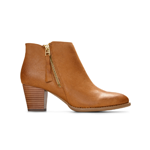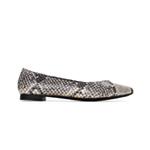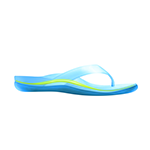What Is A Stone Bruise?

Ever woken up thirsty in the middle of the night, ambled through the dark in order to down a glass of water, and stepped on one of your kid’s stray LEGOs? Yes, we know this is a very specific issue, but we’ve also noticed that it’s a surprisingly common one. So too are running across uneven sidewalks or landing funny after stepping down from a high step. These occurrences can also lead to hours, or even days, of discomfort, in addition to a common ailment known as a stone bruise.
Typically a result of an impact, a stone bruise is that kind of pain in your foot that makes you feel certain there’s a pebble in your shoe. Most people experience the annoying, yet fairly minor torment of a stone bruise at least once during their lifetime.
There are many ways to treat stone bruises, and they’re also fairly easy to avoid if you’re willing to take steps that will help to prevent them. (Apologies for our silly pun.) In this blog post, we’ll go over just what a stone bruise is in more detail, plus discuss common causes and symptoms. We’ll also tell you the best ways to treat a stone bruise and share a few of our top tips on how to steer clear of them in the future.
Stone Bruises: An Overview
The term stone bruise is a general word used to describe any pain in your foot—usually in the ball of your foot or sometimes the heel since these are the two areas that absorb the most impact as you walk and generally move around. You may also hear stone bruises referred to as “metatarsalgia,” which is the medical term for pain that occurs specifically in the ball of your foot.
One of the reasons stone bruises are easy to identify is that they literally feel like you are continuously stepping on a stone. Though it can take as many as 48 hours to experience that princess-and-the-pea moment, the pain is extremely recognizable.
Other symptoms include sharp pain, burning, or even tingly pain, which happens when the nerve endings themselves become irritated or inflamed.
Additional symptoms may include:
- Purple, yellow, or red coloring on the foot
- Tenderness in the area
- Swelling or inflammation
One thing we’d like to note: If you have a stone bruise, it doesn’t always mean you came into contact with an actual stone—it only means that it feels like you did. In reality, stone bruises can result from all kinds of situations.

Why Do Stone Bruises Happen?
Stone bruises can come about from all kinds of activities, including:
- Running
- Jumping
- Hiking on broken or bumpy ground
- High-impact sports (like gymnastics)
- Improper or inadequate footwear
Stone bruises are more likely to occur when there is impact involved over and over again. This means that whether you’re repeatedly pounding the basketball court in search of that perfect lay-up or walking for hours over a gravelly road, you may be putting yourself at risk.
Of course, some people are more likely to suffer from a stone bruise than others. Runners are a group often particularly aggrieved by injuries to the feet. This is due to the fact that the forefoot has to absorb up to 110 tons of force for every mile racked up.1 Talk about shock value!
In addition, people who are older are at greater risk for stone bruises, as are people who are carrying around excess weight. Even tight or sore muscles in your feet and ankles can be unlikely precursors because they can affect your foot’s natural biomechanics.
Certain medical conditions, like diabetes, may also increase your chances of getting a stone bruise. If you’ve tried and failed to find success with more protective, supportive shoes, it may be a good idea to speak to your doctor or a podiatrist about the targeted actions that you can take.
Most people, however, won’t need to do that. While they can create a bit of discomfort, the good news about these injuries is that the pain usually diminishes within a day or two. If you’re suffering from a stone bruise, try checking out our tips for fast relief below before heading to the doctor’s office.

How to Treat a Stone Bruise
Whether you’re experiencing stone bruises, foot problems, or heel pain, any discomfort or foot deformities should be addressed and treated as soon as possible. If you’ve ever rolled an ankle or sprained a wrist, chances are you’ve tried to promote healing at home with the RICE method. Loved by high school soccer coaches and doctors alike, the RICE method is a popular DIY treatment approach, so-called because it makes an easy-to-remember acronym, Rest, Ice, Compression, Elevation.
You can get started with RICE at the first sign of pain with the following steps:
- Rest – This one’s a no-brainer. If your feet hurt, then… get off your feet! Cutting back on walking and standing takes a load off the affected area, so make sure you are sitting and laying down as much as possible. Pro tip: Use a pedometer to track your steps and try to keep that number low until the pain recedes.
- Ice – Applying ice or a cold pack to your foot will help keep the swelling down. We recommend icing for fifteen to twenty minutes up to three times per day. This part of the routine should also be repeated until your pain is gone.
- Compression – Applying pressure to a specific injury can speed up the recovery process. This is because it helps keep swelling down and prevents fluid from building up around the injury.2 Pick up a reusable elastic bandage at your local pharmacy and wrap the affected area, taking care to avoid tightening it so much that you cut off circulation.
- Elevation – Use a pillow or chair to keep your injured foot at or above your heart level. This will help your body circulate blood more quickly, which leads to faster healing.
- Acetaminophen – While not technically part of the RICE method, we also recommend using over-the-counter pain relievers like Ibuprofen and Tylenol to help reduce swelling and clear up any discomfort you may be feeling.
The trouble with any kind of foot or ankle pain is that most people aren’t able to completely stay off their feet until they are fully healed. Luckily, the RICE method is easy to carry out at home (or even beneath your desk at work, if necessary), allowing you to treat your stone bruise on foot or on the fly.
Try these simple steps to help alleviate pain and speed your recovery. In most cases, your stone bruise will go away in a day or two.

How to Prevent Stone Bruises
If you are a runner or an avid athlete, you may experience foot pain more regularly than the average person. If that’s the case, then talk to an expert or your doctor or coach about how you can continue to enjoy your favorite high-impact pastimes without experiencing injury or discomfort. Any foot condition or discomfort should be addressed if you’re always placing pressure on your feet, like physical activity.
But what about the rest of us? Though not exactly debilitating, stone bruises are irksome enough that most people want to do what they can to avoid a recurring problem. Similarly, those committed to a workout routine don’t need the constant disruptions that even minor irritations cause. So, what’s the easiest way to prevent stone bruises?
The answer is simple: shoes.
While the muscles in our feet already offer stabilization and support and the fat pads along our soles supply protection, sometimes what our bodies can provide just isn’t enough, particularly if a demanding work or exercise routine prevents us from treading lightly when we need to.
When this is the case, the kind of footwear you use can make an enormous difference on your foot problems. In addition, orthotics and insoles will help correct any issues in your biomechanics, like over-pronation, that may be leading you down the path to stone bruises or other injuries. The form of high heels, for example, can cause foot and heel pain, and maybe even have a higher chance of developing foot deformities like bunions. If you’re wondering what is a bunion, it’s a bony bump that occurs on the side of your big toe and can be caused by a few factors including shoes.
When it comes to choosing shoes that prevent bruises and foot injuries, look for a pair that includes:
- Stability
- Arch support
- Cushioning
If you’re experiencing severe pain, try to find a pair that carries the APMA Seal of Acceptance. This is an award created by the American Podiatric Medical Association that is given to shoes, equipment, and other therapeutic products that promote good foot health.3
Choosing a shoe with a contoured shape that helps protect your feet can also be beneficial when it comes to keeping you injury-free.
Protect Against Stone Bruises and Other Feet Injuries with Vionic Shoes
If you’re eager to get back out on the trail or resume your regular activities, but feel impeded by that nagging sensation in your foot, you need shoes that provide essential stability and the right amount of support. Whether you’re looking for over pronation shoes or a pair that can provide comfort for your heel pain, it’s important to find the right type of footwear.
Our Vionic shoes feature a contour that is seamlessly engineered into each and every pair, providing comfort while promoting natural alignment. Many of our shoes are APMA-approved but without the look and clunkiness of the usual orthopedic offer. In fact, we offer loafers, walking shoes, sneakers, and even shoes with a heel for a look that is both stylish and supportive. If flats are your style, we also offer women’s flats with arch support to best treat your foot type and prevent pain.
Check out our resources explaining how our shoes passed the tests of our resident podiatrists. Or visit our website to check out our array of sandals, boots, and more.
Sources:
- Drozd, Shelley. “Metatarsalgia.” Runners World. 27 October, 2014. https://www.runnersworld.com/health-injuries/a20801065/metatarsalgia/
- Sawyers, Tessa. “Compression Wrapping.” Healthline. Updated 31 August, 2018.https://www.healthline.com/health/compression-wrapping#wrapping-sprained-ankle
- “Seal of Acceptance / Approval Program.” APMA. https://www.apma.org/2020SealApproved/landing.cfm?navItemNumber=24202









